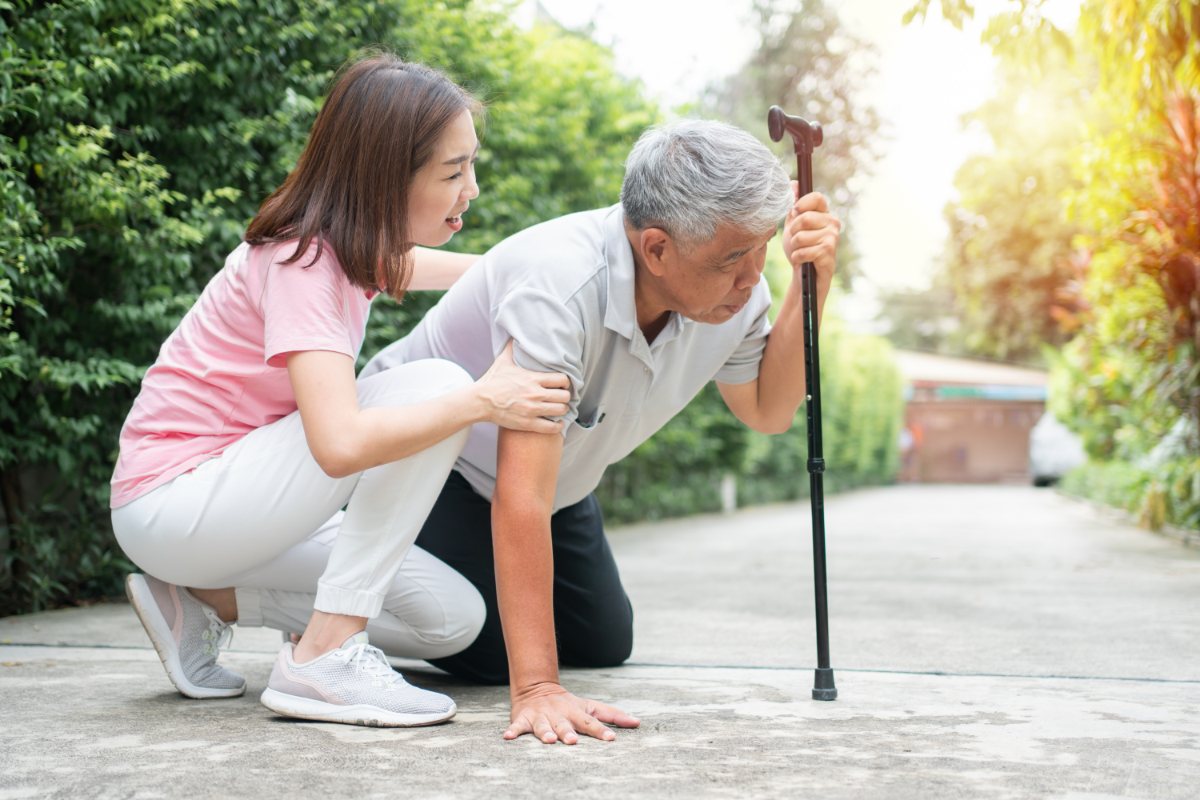Falls are a major health concern for the elderly population. According to the Centers for Disease Control and Prevention (CDC), falls are the leading cause of injury and death among older adults. In fact, one in three adults aged 65 and older falls each year, and falls are responsible for more than 2.8 million injuries treated in emergency departments annually.
Fortunately, many falls are preventable. There are several practical tips that can help older adults reduce their risk of falling and stay safe. From making simple home modifications to staying active and engaged, there are many steps that can be taken to prevent falls and maintain independence. In this article, we will explore some of the most effective ways to prevent falls in the elderly population and promote safe and healthy aging.
Understanding Fall Risks in the Elderly
Falls are a common and serious problem among the elderly population. According to the Centers for Disease Control and Prevention (CDC), more than one in four older adults fall each year, and falls are the leading cause of both fatal and non-fatal injuries in this age group. Understanding the risk factors for falls is an important step in preventing them.
Risk Factors for Falls
There are many factors that can increase the risk of falls in the elderly, including:
- Age-related vision changes
- Chronic health conditions, such as arthritis, diabetes, or heart disease
- Medications that can cause dizziness or drowsiness
- Muscle weakness or balance problems
- Environmental hazards, such as uneven floors, poor lighting, or cluttered walkways
Prevention Strategies
Preventing falls in the elderly requires a multi-faceted approach. Some strategies that can help reduce the risk of falls include:
- Regular exercise to improve strength, balance, and flexibility
- Reviewing medications with a healthcare provider to identify any that may increase fall risk
- Regular vision and hearing exams to identify and address any age-related changes
- Making environmental modifications, such as installing grab bars in bathrooms or removing tripping hazards
- Wearing appropriate footwear with good support and non-slip soles
By understanding the risk factors for falls and implementing appropriate prevention strategies, it is possible to reduce the incidence of falls in the elderly population.
Creating a Safe Living Environment
Home Modifications
Making necessary modifications to the living environment can reduce the risk of falls in the elderly. The following modifications can be made:
- Install grab bars in the bathroom and near the bed to provide support and stability while standing or sitting.
- Use non-slip mats in the bathroom and kitchen to prevent slipping on wet surfaces.
- Remove clutter and unnecessary furniture to create a clear pathway for walking.
- Consider installing a ramp or a stairlift if there are stairs in the house.
Lighting and Visibility
Good lighting and visibility can help the elderly see obstacles and hazards in their environment. The following tips can improve lighting and visibility:
- Install bright lights in all rooms, especially in areas where the elderly spend most of their time.
- Use nightlights in hallways and bathrooms to help navigate in the dark.
- Keep curtains and blinds open during the day to allow natural light in.
- Use contrasting colors to make important objects, such as light switches and door handles, more visible.
By making simple modifications to the living environment, the risk of falls in the elderly can be reduced significantly.
Encouraging Physical Activity and Balance
Exercise Programs
Regular physical activity is essential for maintaining balance and preventing falls in the elderly. Exercise programs can help improve strength, flexibility, and balance, reducing the risk of falls. Walking, swimming, and cycling are great low-impact exercises that can be done regularly.
Additionally, strength training exercises can help build muscle mass, which can improve balance and stability. Resistance bands, free weights, and weight machines can be used to perform strength training exercises.
It is recommended that elderly individuals engage in at least 150 minutes of moderate-intensity aerobic activity per week, as well as muscle-strengthening activities at least two days per week. However, it is important to consult with a healthcare provider before beginning any new exercise program.
Balance Training
Balance training exercises can help improve stability and reduce the risk of falls. Simple exercises such as standing on one foot or walking heel-to-toe can be effective.
Tai chi and yoga are also great options for improving balance. These activities incorporate slow, controlled movements that help improve strength and balance.
It is important to start with simple exercises and gradually increase the difficulty as balance improves. It is also important to practice balance exercises regularly to maintain progress.
Encouraging physical activity and balance training can help prevent falls in the elderly. By incorporating regular exercise programs and balance training into daily routines, elderly individuals can improve their overall health and reduce the risk of falls.
Medical Management and Assistive Devices
Regular Health Check-Ups
Regular health check-ups are essential for the elderly to manage their health conditions and detect any potential risks that may lead to falls. It is crucial to monitor blood pressure, vision, and hearing regularly. Elderly individuals with chronic medical conditions such as diabetes, osteoporosis, or cardiovascular diseases are at a higher risk of falling. Therefore, it is necessary to keep track of their medications and ensure that they are taking them as prescribed.
Proper Use of Mobility Aids
The proper use of mobility aids such as canes, walkers, and wheelchairs can reduce the risk of falls in the elderly. However, it is essential to ensure that these devices are appropriate for the individual’s needs and are adjusted to the correct height. It is also crucial to provide training on how to use these devices correctly and safely.
Using assistive devices such as grab bars, shower chairs, and raised toilet seats can also help prevent falls in the elderly. These devices can assist with daily activities such as bathing, toileting, and getting in and out of bed. It is crucial to ensure that these devices are installed correctly and are in good working condition.
In conclusion, regular health check-ups and the proper use of mobility aids and assistive devices can significantly reduce the risk of falls in the elderly. By taking these preventative measures, the elderly can maintain their independence and improve their quality of life.

Carlos Maia is the dedicated writer behind the invaluable content at Digital Nearby, a blog that provides essential tips for caregivers of the elderly. With a remarkable talent for weaving words into compelling narratives, Carlos brings a unique perspective and genuine passion to every piece he creates. His extensive experience spans various fields, from healthcare to personal development, allowing him to masterfully blend knowledge and empathy in his writing. Carlos not only excels at crafting informative and engaging articles but also understands the nuanced needs and interests of his audience. His dedication ensures that each piece of content is not only relevant but also deeply impactful, offering caregivers practical advice and heartfelt support. Whether through insightful guides, touching stories, or persuasive content, Carlos has the gift of leaving a lasting impression on his readers, making their caregiving journey a little easier and a lot more fulfilling.

